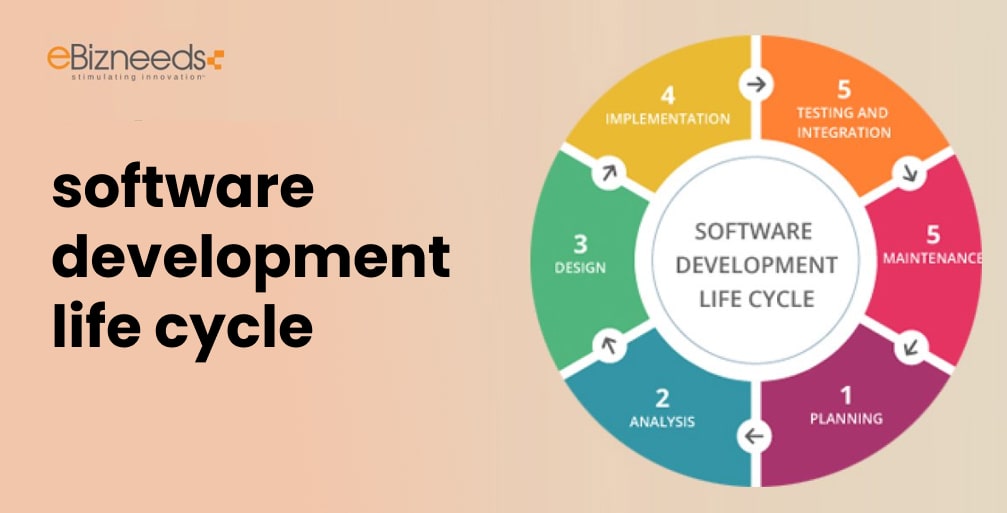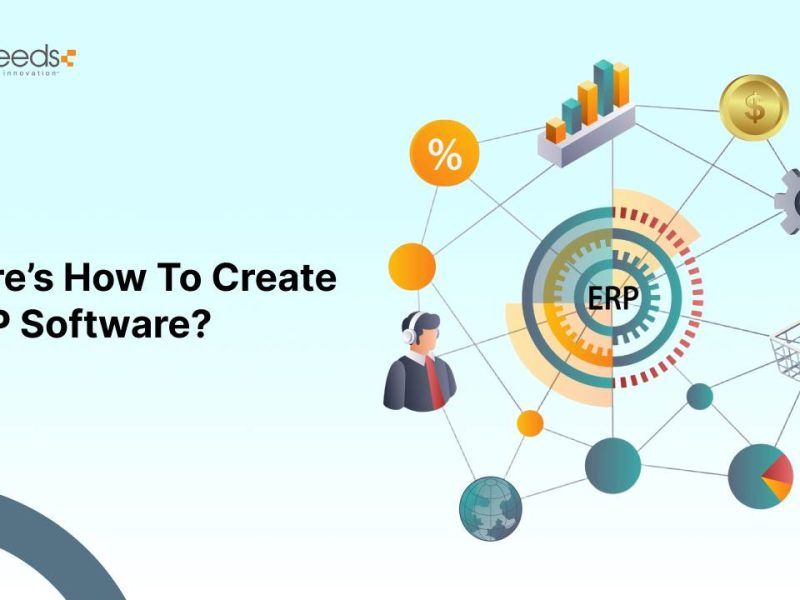The software development process is lengthy and time-consuming. However, the software development life cycle aids in better planning, design, development, testing, and deployment of information systems and software products. It also applies to custom software development.
What is the Software Development Life Cycle
A software development life cycle is a project management method. This document also outlines each phase of a project, from planning to deployment and ongoing maintenance.
Software Development Life Cycle Phases
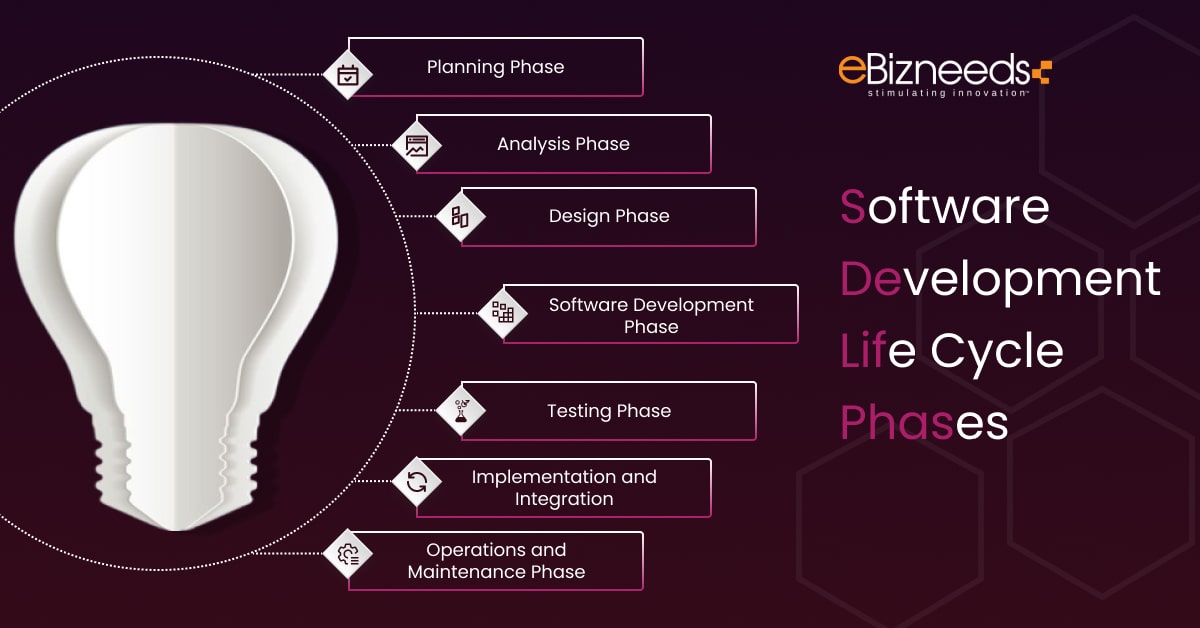

This blog will discuss the SDLC phase for your benefit.
We will talk about what system experts do and what the software development life cycle is good for. As well as give in-depth details on software development and custom software development solutions.
We can break down the current system development life cycle into seven phases. Here is a quick look at the numbers:
- Planning Phase
- Feasibility Phase
- Design and Prototyping Phase
- Software Development Phase
- Software Testing Phase
- Implementation and Integration
- Operations and Maintenance Phase
Let’s now examine each phase in detail.
Planning Phase
Before starting the planning phase, take the time to learn about the software development life cycle.
It assists in defining the problem and scope of any existing systems as well as developing goals for their new ones.
They will be able to catch issues before they have a chance to affect the development process by creating an outline for the next cycle.
And it assists them in getting the funds and resources required to carry out their plan.
A key concern is planned development of a product that needs to be on the market by a particular date hence it requires a tight project schedule.
Analysis Phase
To build a new system, you need to gather and evaluate all the necessary data and talk about the prototype ideas.
Developers can:
- Define any prototype system requirements.
- Assess possible choices for the current prototypes
- Assess the needs of the end-users by research.
- Draft a software requirements specification (also known as an SRS document).
These requirements include the system’s hardware, software, and network link needs. They won’t have to worry about running out of money because they won’t work in the exact location of other development teams.
Design Phase
Before the main development phase, the design phase is vital to ensure the final product’s success.
As a starting point, dedicated software developers will lay out the software features such as:
- Interfaces for the user
- A system’s interfaces
- Needs for networks
- Databases
After creating an SRS document, they will reorganize it into something that can later use in a programming language. It will provide developers with detailed plans for each cycle phase, like training and maintenance.
During the next step of the software development life cycle, development managers will make a design document to use as a guide.
Development Phase
The development phase is where the actual coding and building of the software takes place before it is created, based on the requirements and design forms.
As a result, short for Static App Security Testing become suitable.
The design certificate uses to build the product’s program code. In theory, the actual development phase should be simple because of all the prior planning outlined.
Developers can use coding rules and tools such as compilers, debuggers, or interpreters following the software development company.
There are many programming languages, like C++, PHP, and others. Depending on the details of the project, programmers will select the coding language.
Testing Phase
After completing the starting phase of software development, you need to test the software that there are no defects and that it will not affect the end-user experience at any point during the development process.
Testers go through the code with a fine-toothed comb, looking for any bugs or defects that need to track, fixed, and retested.
We must meet SRS quality standards for the software to get successful in the end.
Testing can take a short or very long time, depending on the developer’s skill, the software’s difficulty, and the end user’s needs.
Implementation and Integration Phase
The software’s general design will come together after testing. Considering different modules or techniques in the core source code is done using training to find flaws or defects.
We will implement the data system in its context. Once the software has passed this phase, it is ready for market and can provide to end-users.
Maintenance Phase
Once the software is released, the SDLC is not over. Now is the time for developers to shift into maintenance mode and begin preparing for any issues that users may bring to their attention.
After software deployment, developers are liable for making any required changes.
You need to deal with bugs that were not fixed before the product release or to set new issues of user feedback. It may take longer for larger systems to maintain than for smaller systems.
A System Analyst’s Job Description
In certain aspects, an SDLC’s system analyst serves as the system’s watchdog. If they’re familiar with the design and its elements, they can help drive the project in the right direction.
There should be a system analyst:
- A professional in tech skills for the project.
- Commanding their team to success, a competent speaker
- A time manager who can ensure that tasks at each development cycle phase will be completed on schedule.
Systems experts should focus on various technical and management competencies. They can make or break a software development life cycle (SDLC).
A project’s success hinges on its skill to handle various tasks and duties. To be a systems analyst, you will need possibly ask the following:
- Assemble facts and data
- Decide which problems to arrange and which features to omit from the product.
- Endorse other options
- Both programmers and consumers know and sketch out standards
- Maintain modularity while developing sound systems that can integrate.
- Following project goals and skills to assess and change the final system
- You can use user needs to help define and know the objectives and conditions of a project
Six SDLC Methodologies
In general terms, the software development life cycle (SDLC) is a project management model. Six unique methodologies can use to achieve outcomes or to enhance the SDLC.
Waterfall Model
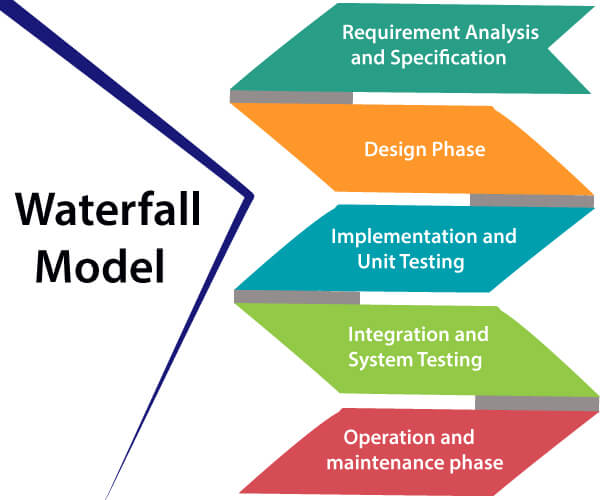

Source: Javatpoint
In software development lifecycle models, the waterfall approach is prevalent. Each project phase must complete to move on to the next step. Each step has a different project plan, and knowledge gleaned from the previous phase to avoid reappearances.
It is likely to start late, which could cause problems for the teams making the software in the future.
Iterative Model
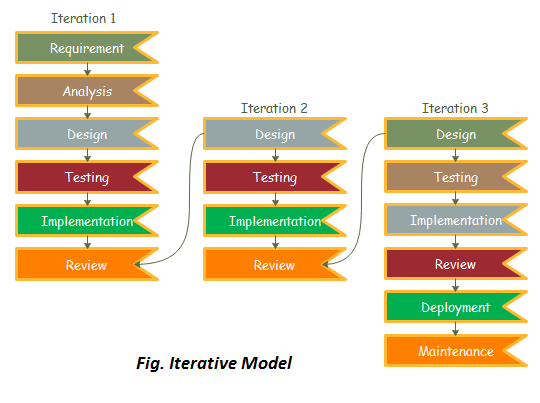

This model focuses on re-assessment of the results. There are new versions of each phase of a software development process to ensure that the final product is error-free and fit for the market when it’s released. As a benefit, it is possible to construct a working prototype of the project at an earlier phase, which declines the cost of making changes to it.
Spiral Model
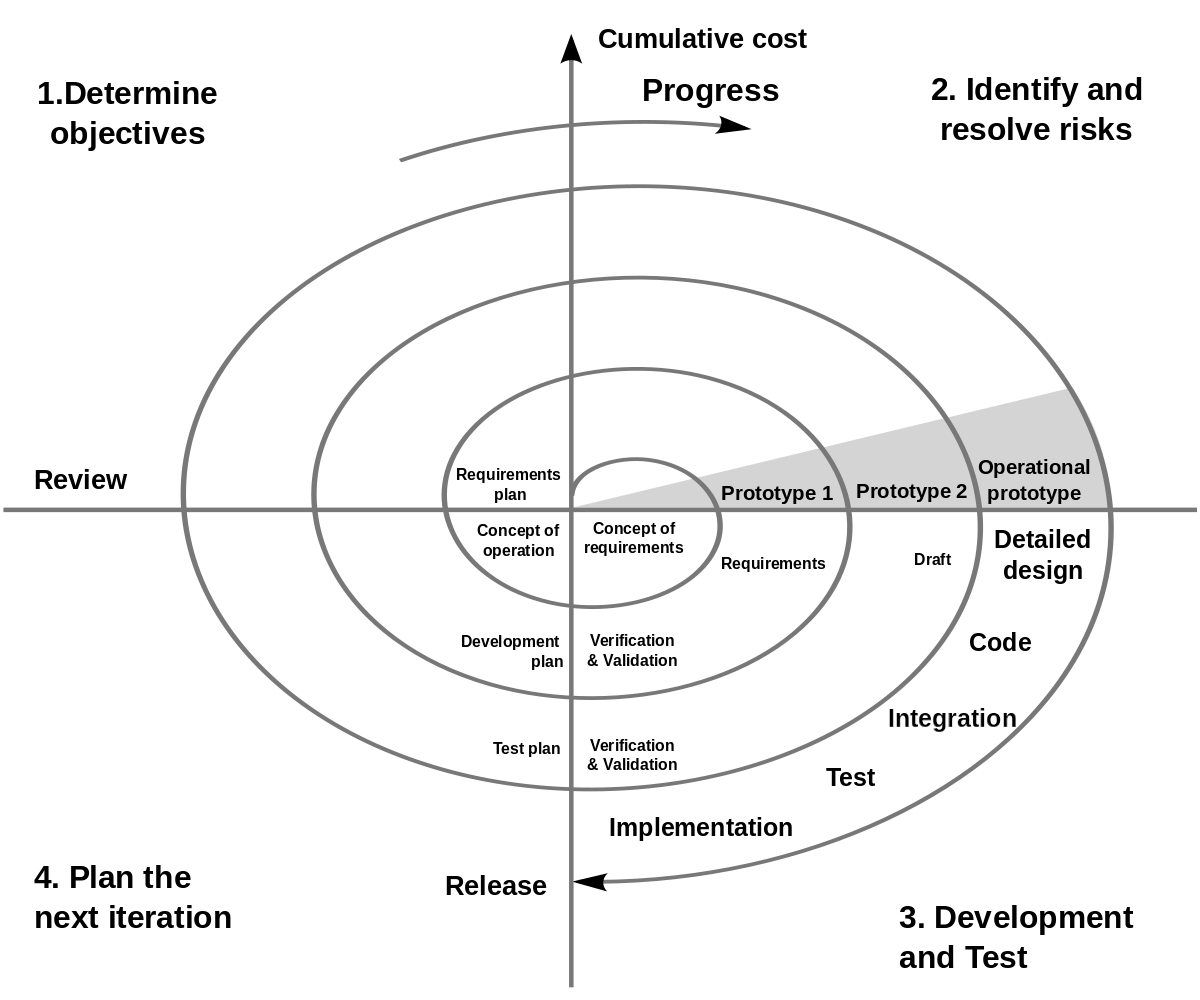

When compared to other approaches, spiral models are more flexible. In a symbolic loop, projects go through four phases over and over again.
For large projects, it’s beneficial since the development teams may design customized products and any input received early in the process.
V-Model
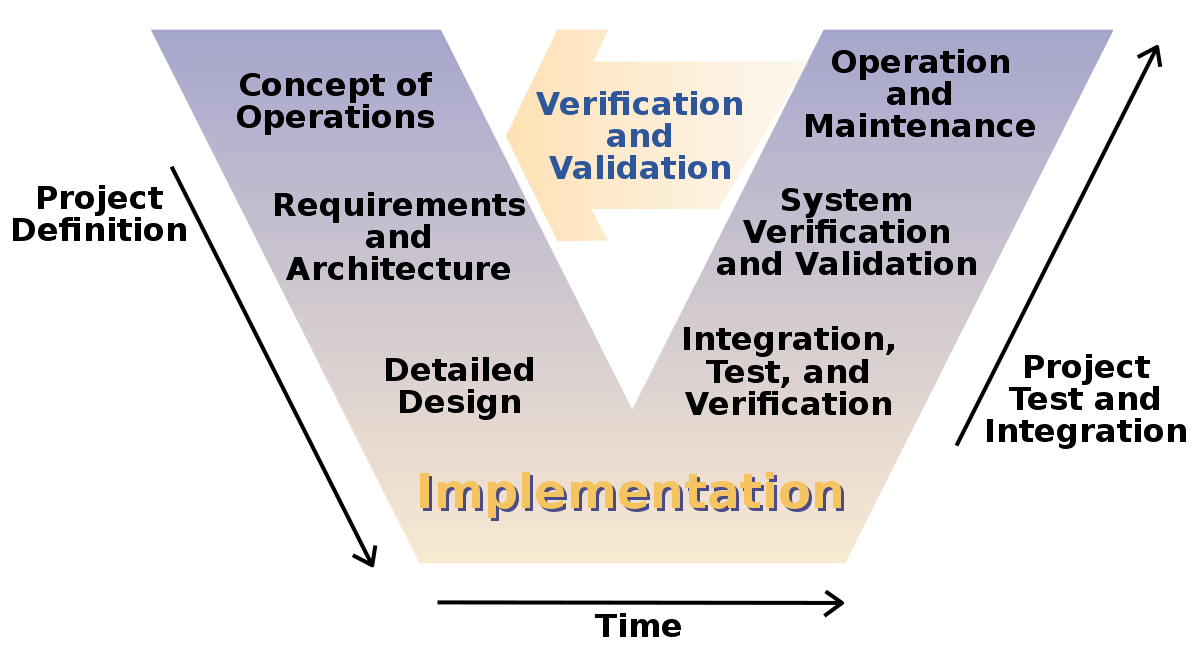

The waterfall model and the V-model (which stands for validation) are similar. Each phase of the development process includes a testing phase to catch any possible faults or problems.
It has strict obedience to a set timeframe. It highlights the flaws of the robust waterfall approach to avoid the out-of-control growth issues.
Big Bang Model
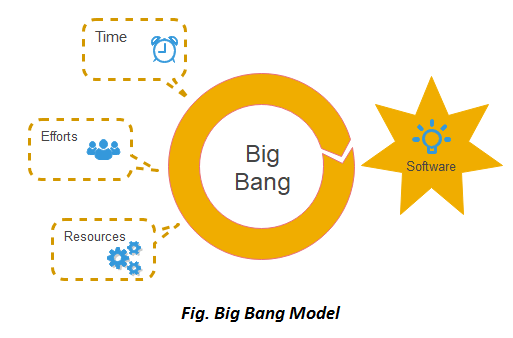

Source: JavatPoint
The Big Bang Model is compliant and does not adhere to a strict technique or process. Even the most thorough planning has yet to be left behind. Brainstorming is helpful when a buyer or client needs help figuring out what they want. To begin a project, the developers have money.
Their work will be different from what the client wants. Smaller projects and experimental life cycles are this tool’s most common use cases.
Agile Model
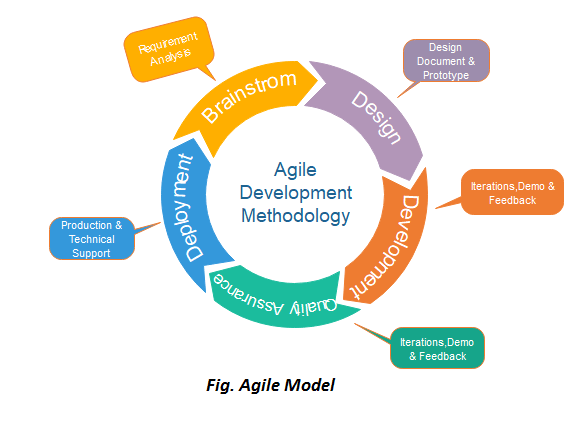

Source: JavatPoint
Even in enterprise software development services, there is a lot of knowledge of agile software development.
Small changes between releases are vital for constant release cycles for the agile development process. Compared to other models, this requires a lot more iterations and testing.
Using this model, you address minor issues earlier in the project rather than deferring them until the more complex phases.
The Benefits of Using SDLC
You can gain many benefits by considering a development team’s software development life cycle.
Purpose Statements
As a result, there is less chance of time and money waste because developers know what they expect to do.
Pre-Installation Testing
We must test all software before it uses in the source code.
Streamlined Progress
Developers can go on to the following when the last age completes and is approved by management.
A Member’s Flexibility
To make it easier to replace team members, SDLCs provide well-structured documentation for project goals and processes.
It’s Possible to Reach Perfection
It’s important to note that all phases of the SDLC are reliable. Projects can iterate and improve on themselves until they are flawless, thanks to SDLC models.
One person can’t make or break the project
Once again, because SDLCs need a lot of paperwork and standard documents, a single member’s exit will not affect the project’s timeframe.
Software Development Life Cycle: What You Need to Know?
How can you use SDLC?
System development life cycles are employed in IT projects.
Use SDLCs to set up phases of development, make sure each step is done on time, and make sure the project is done as quickly and without bugs as possible.
Systems experts can also use SDLCs to build and implement a new data system.
The best software development process models are a matter of personal preference.
Your team’s objectives and resource needs will impact how you proceed.
Many IT development teams use the agile technique for their software development life cycle (SDLC). Others may favour spiral approaches.
They are popular because they help in testing and iteration before a product adds to a more source code or is released to the market.
The next prominent option is the use of DevOps methodologies.
Conclusion
On the basis of above discussion, it can be concluded that there are different stages of SDLC that aids you to develop software. As per the project’s needs, the amount of time and money spent on software development varies.
In such cases, you can take support of software development firm. It ensures no wasted time, effort, or money in the project. Even on a tight budget, you can avoid errors by hiring dedicated developers.



Naveen Khanna is the CEO of eBizneeds, a company renowned for its bespoke web and mobile app development. By delivering high-end modern solutions all over the globe, Naveen takes pleasure in sharing his rich experiences and views on emerging technological trends. He has worked in many domains, from education, entertainment, banking, manufacturing, healthcare, and real estate, sharing rich experience in delivering innovative solutions.
